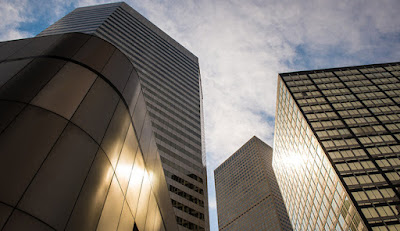|
About Topic In Short: |
|
|
|
Who: National
Renewable Energy Laboratory (NREL). |
|
What: Use of thermochromic windows based on
perovskite materials in office buildings to significantly improve energy
efficiency and reduce energy waste and carbon emissions. |
|
|
How: Adding a thermochromic laminate to single-
or double-pane windows yields the greatest energy savings, with the ideal
transition temperature falling within the range of 68-81.5°F (20-27.5°C). |
|
Introduction:
Buildings
consume a significant amount of energy, and heating and cooling are the largest
contributors to this energy consumption. This results in high energy bills and
increased carbon emissions, which have a significant impact on the environment.
To address this issue, scientists have been exploring various ways to improve
energy efficiency in buildings. One promising solution is the use of
perovskite-based thermochromic windows. This article explores the process of
creating these windows and their potential to reduce energy load in
buildings.
What are Perovskite Windows?
Perovskite
windows are a type of smart window that can change their transparency or
reflectivity in response to temperature changes. They are made by depositing a
thin layer of perovskite material on glass or plastic. Perovskite materials
have unique optical and electrical properties that make them highly efficient
in converting sunlight into electricity. This makes them an ideal material for
use in solar cells and smart windows.
How Perovskite Windows Work:
Perovskite
windows work based on the thermochromic effect. When the temperature changes,
the perovskite layer in the window changes its crystalline structure, which
alters the optical properties of the material. This change in the structure
causes the window to change its color from transparent to opaque or reflective,
depending on the temperature. In hot climates, the windows become reflective,
reducing the amount of heat entering the building, while in cold climates, they
become opaque, preventing heat loss from the building.
Creating Perovskite Windows:
Creating
perovskite windows involves depositing a thin layer of perovskite material on
glass or plastic. This can be done using various methods such as spin-coating,
vapor deposition, or inkjet printing. However, the challenge with perovskite
materials is their instability, which makes it difficult to maintain their
performance over time. Scientists are working on improving the stability and
durability of perovskite materials to ensure their long-term
effectiveness.
Benefits of Perovskite Windows:
Perovskite
windows have several benefits over traditional windows. They can significantly
improve energy efficiency in buildings by reducing heating and cooling loads.
They can also reduce energy bills and carbon emissions, making them an ideal
solution for sustainable building design. Additionally, perovskite materials
are cheap and easy to produce, making them a cost-effective solution for large-scale
deployment.
Thus Speak Authors/Experts:
According to
Dr. James Ball, a senior researcher at the National Renewable Energy Laboratory
in the US, "Perovskite-based thermochromic windows have the potential to
reduce energy consumption in buildings by up to 30%. This technology is a
promising solution for sustainable building design, and further research is
needed to optimize the technology and ensure its durability and effectiveness
in the long term."
Conclusion:
Perovskite
windows are a promising solution for reducing energy load in buildings. They
have the potential to significantly improve energy efficiency, reduce energy
bills and carbon emissions, and contribute to sustainable building design.
However, more research is needed to optimize the technology and ensure its
long-term effectiveness. With further development and deployment, perovskite
windows could play a significant role in creating a greener and more
sustainable future.
Image
Gallery
|
|
Downtown Denver features many buildings with glass facades. Researchers from NREL say retrofitting these windows with thermochromic ones can improve energy efficiency across all climate zones in the United States. Photo by Dennis Schroeder, NREL. |
|
All Images Credit: from References/Resources
sites [Internet] |
Hashtag/Keyword/Labels:
#PerovskiteWindows #EnergyEfficiency #CarbonEmissions
#BuildingDesign #ThermochromicWindows #RenewableEnergy
References/Resources:
NreL
For more such
blog posts visit Index
page or click InnovationBuzz label.
…till next post, bye-bye and take-care.























